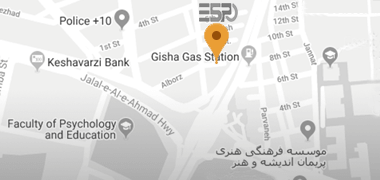
ESPO excels in delivering Phase III architectural services, which focus on supervising and ensuring the precise execution of the design during the construction phase. This critical stage ensures that every element of the project adheres to the approved design, technical standards, and functional requirements, especially for specialized healthcare environments like hospitals and treatment facilities.
Key Services in Phase III Architectural Design:
-
Construction Supervision:
- Regular site visits to monitor progress and ensure compliance with the approved plans and specifications.
- Coordinating with contractors to address any design-related queries or adjustments during construction.
-
Shop Drawing Review:
- Evaluating detailed shop drawings from contractors to confirm their alignment with the design intent and project standards.
-
Material and Sample Approval:
- Inspecting and approving construction materials, finishes, and fixtures to ensure they meet project specifications, especially in sensitive areas such as operating rooms and sterile zones.
-
Quality Assurance and Control:
- Ensuring that construction practices meet the highest quality standards, including infection control, durability, and functionality.
-
Coordination with MEP Systems:
- Overseeing the integration of mechanical, electrical, and plumbing (MEP) systems to prevent clashes and ensure seamless operation.
-
Testing and Commissioning:
- Verifying the installation and functionality of specialized equipment and systems, such as HVAC for operating rooms, medical gas systems, and lighting in diagnostic areas.
-
As-Built Documentation:
- Preparing accurate as-built drawings to reflect the final constructed facility for future reference and maintenance.
-
Handover Support:
- Facilitating the transition from construction to operation by providing detailed documentation, user manuals, and on-site training if required.
ESPO’s Approach in Healthcare Projects:
- Attention to Detail: Strict adherence to healthcare standards like FGI Guidelines, HTM, or JCI to ensure patient safety and regulatory compliance.
- Collaboration: Close communication with stakeholders, including medical staff, contractors, and consultants, to address any on-site challenges promptly.
- Problem-Solving: Proactively resolving construction issues while maintaining the integrity of the design.
- Sustainability: Monitoring the implementation of green building practices and energy-efficient solutions during construction.
In addition to its core responsibilities, ESPO’s Phase III architectural services emphasize proactive involvement throughout the construction process to guarantee that the final product aligns with the client’s vision, operational needs, and regulatory requirements. This is particularly crucial in healthcare projects, where precision, safety, and efficiency are paramount. Below are additional key aspects that set ESPO apart in Phase III delivery:
Advanced Features of ESPO’s Phase III Services
-
Mock-Up Inspections:
- Supervising the construction of mock-up rooms (e.g., patient rooms, operating theaters) to validate design functionality, finishes, and equipment placement before full-scale implementation.
-
Change Management:
- Managing and documenting any design or construction modifications, ensuring they are reviewed and approved without compromising quality or timelines.
-
Specialized Systems Validation:
- Overseeing the installation and commissioning of advanced medical systems, such as imaging equipment, modular operating rooms, and telemedicine platforms, to ensure seamless functionality.
-
Interdepartmental Coordination:
- Ensuring that constructed spaces align with hospital workflows, including pathways for patients, medical staff, and logistics, while maintaining infection control measures.
-
Energy Efficiency Audits:
- Conducting assessments to confirm the implementation of energy-efficient systems, including LED lighting, HVAC optimization, and renewable energy solutions.
-
Acoustic and Thermal Inspections:
- Verifying the proper execution of soundproofing and thermal insulation, critical in healthcare settings to enhance patient comfort and privacy.
-
Client Training and Orientation:
- Organizing orientation sessions for hospital staff to familiarize them with new facilities, systems, and workflows for smooth operational transition.
-
Post-Construction Services:
- Offering support for defect rectification, equipment calibration, and long-term maintenance planning.
Why ESPO in Phase III?
- Holistic Supervision: Comprehensive monitoring of all construction aspects, from foundation work to interior detailing, ensuring fidelity to the design.
- Healthcare Expertise: Profound understanding of healthcare-specific requirements, such as sterile zones, accessibility, and emergency readiness.
- Cutting-Edge Tools: Use of technologies like Building Information Modeling (BIM) during construction to identify and resolve potential conflicts in real-time.
- Timely Delivery: Strong project management to ensure construction stays on schedule without compromising quality.
By combining meticulous attention to detail with a collaborative approach, ESPO ensures that its Phase III services result in healthcare facilities that not only meet but exceed expectations in terms of functionality, durability, and patient-centered design.





